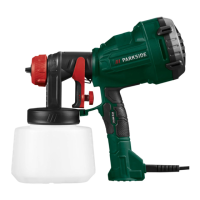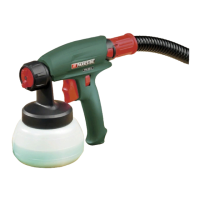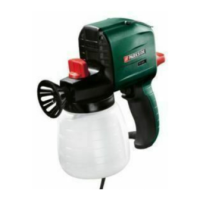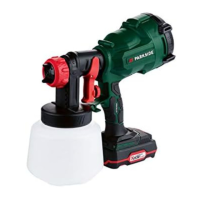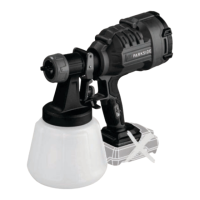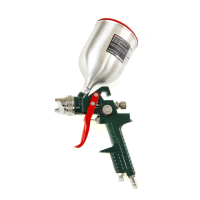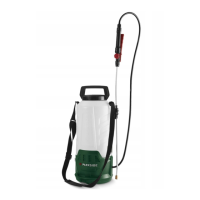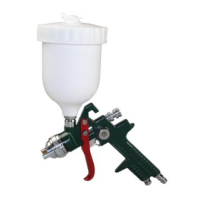PFS 400 A1
GB
│
IE
│
NI
│
CY
│
5 ■
5. Service
a) Have your power tool serviced by a qualified
repair person using only identical replace-
ment parts. This will ensure that the safety of
the power tool is maintained.
Additional safety instructions for
paint spray guns
■ Keep your work area clean, well lit and free
of paint and solvents, cloths and other inflam-
mable materials. Possible risk of spontaneous
combustion. Have a fully functioning fire extin-
guisher available at all times.
■ Ensure adequate ventilation in the spray zone
and sufficient fresh air in the entire room.
Evaporation of flammable solvents will cause an
explosive environment.
■ Do not spray or clean with materials whose
ignition point is lower than 21°C. Use ma-
terials based on water, non-volatile hydro-
carbons or similar materials. The evaporation
of volatile solvents will cause an explosive
environment.
■ Do not spray near ignition sources such as
static electric sparks, open flames, ignition
flames, hot items, motors, cigarettes or sparks
caused by plugging in/unplugging power
cables or by operating switches. These ignition
sources could ignite a fire in the environment.
■ Do not spray any material if you do not know
whether it is potentially dangerous. Unknown
materials can cause hazardous conditions.
■ Wear additional personal protective equip-
ment such as suitable gloves and a protective
mask/respirator when spraying or handling
chemicals. Wearing appropriate protective
equipment for the conditions reduces your expo-
sure to dangerous substances.
■ Be aware of the potential hazards of the
sprayed material. Take note of the markings
on the container and the manufacturer's infor-
mation on the sprayed material, including the
instructions to use personal protective equip-
ment. The manufacturer's instructions are to
be followed to reduce the risk of fire or injuries
caused by poisons, carcinogens, etc.
■ Do not use the spray gun to spray flammable
substances. Do not clean spray guns with flam-
mable solvents.
WARNING!
► Be aware of any dangers inherent to the
spray material and pay attention to all pack-
aging labels and other information provided
by the producer of the substance.
Working procedures
Viscosity
The appliance can process spray materials up to a
maximum 70 DIN/s. (viscosity). You can deter-
mine the viscosity (thickness) of the substance with
the supplied measuring cup using a simplified
measuring procedure.
♦ Fill the supplied measuring cup to the brim
with the spray material.
♦ Remove the measuring cup from the spray
material and allow the liquid to run out.
♦ Measure the time (in seconds) until the stream
of liquid stops. The resulting value is referred to
as DIN seconds (DIN-s).
♦ If the value is too high, gradually thin the spray
material by adding small amounts of a suitable
thinning agent in and mixing the liquid.
♦ Measure the DIN seconds again. Repeat the
process until you measure a viscosity of less
than 70 DIN/sec.
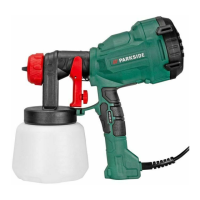
